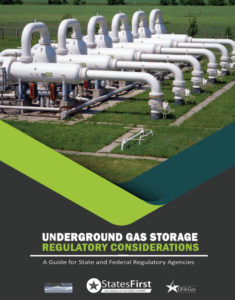News
2024
Invited member of the Technical Committee of the Hydrogen and Energy Storage Conference, 5th EAGE Global Energy Transition (GET2024) Conference and Exhibition (November 4–7, 2024), Rotterdam, The Netherlands.
Scientific Advisory Board, Slope Tectonics Conference, Brno-Křtiny, Czech Republic, September 10–14, 2024.
2023
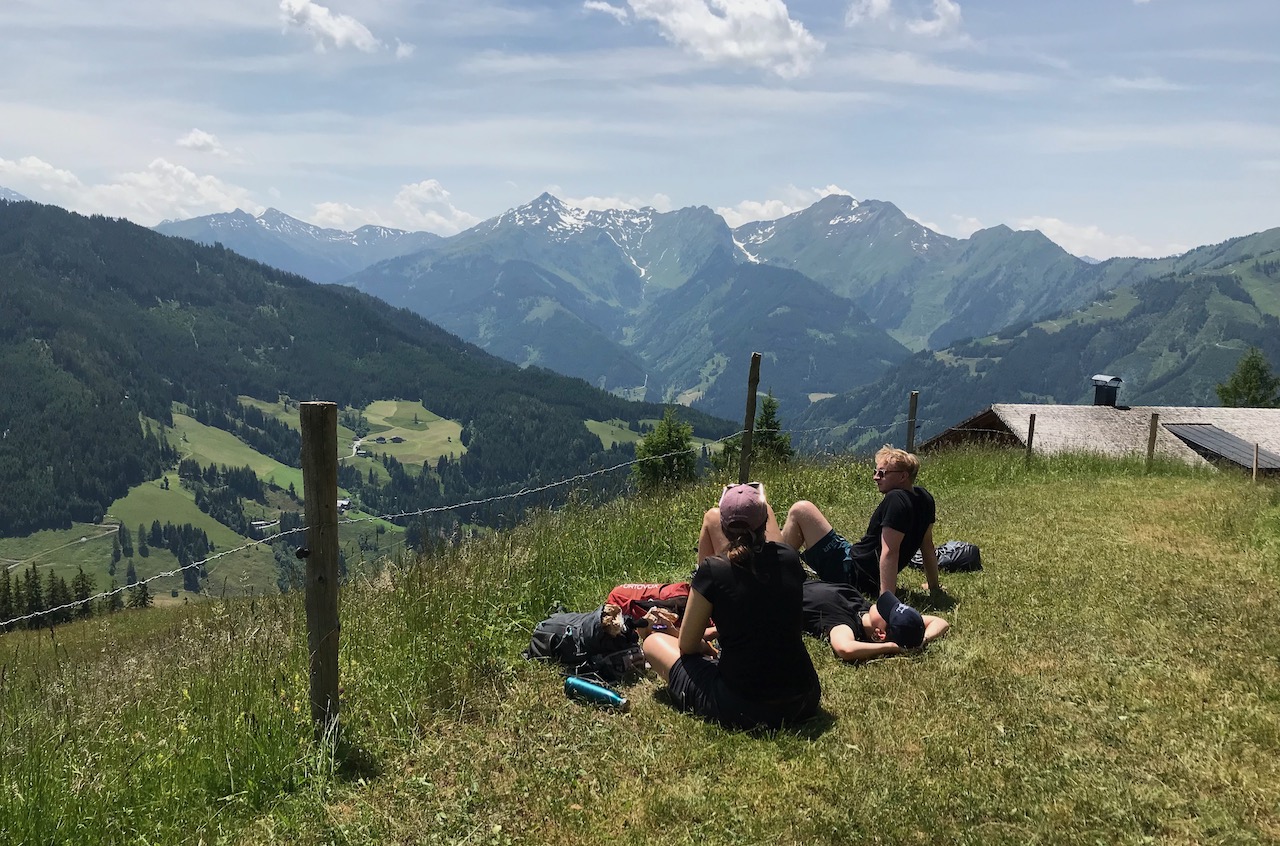
 During May and June I was a Guest Professor at Universität Wien, Austria. In addition to my teaching and research there I was invited to join a student field excursion to the Tauern Window in the Austrian Alps. Very scenic there!
During May and June I was a Guest Professor at Universität Wien, Austria. In addition to my teaching and research there I was invited to join a student field excursion to the Tauern Window in the Austrian Alps. Very scenic there!
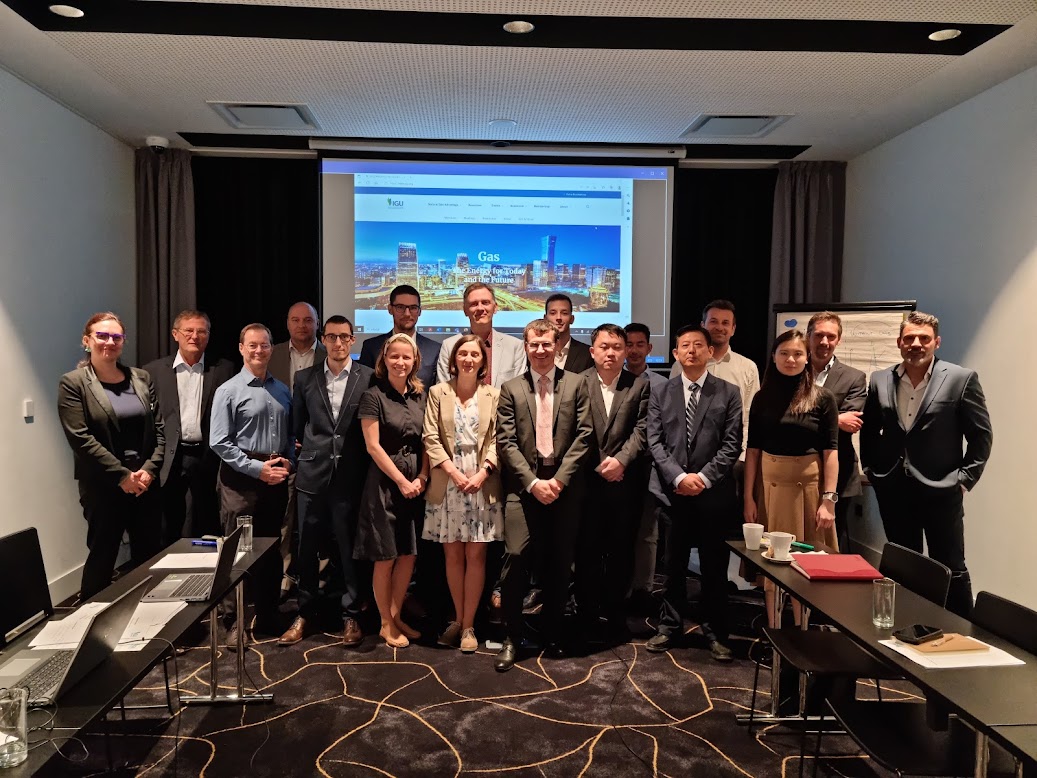
In Spring 2023 I was appointed as a member of the International Gas Union’s (IGU) Underground Gas Storage Committee. IGU has recently broadened its focus beyond natural gas to include hydrogen, CO2, biomethane, and other gases of current interest and importance. Here’s a group shot from our meeting in Brno, Czech Republic.
2022
I am privileged to have been appointed to have been appointed to the International Energy Agency’s (IEA) Hydrogen Technology Collaboration Programme (Hydrogen TCP), Task 42: Underground Hydrogen Storage Workplan, from 2022–2024. Find out more at![]()
https://www.ieahydrogen.org/t
After more than a year of dedicated effort from the two-dozen members of ARMA’s Underground Storage and Utilization Technical Committee, a total of 5 papers were accepted for publication in the Geological of London Special Publication 528 on “Enabling Secure Subsurface Storage in Future Energy Systems.” These included high-level overviews of: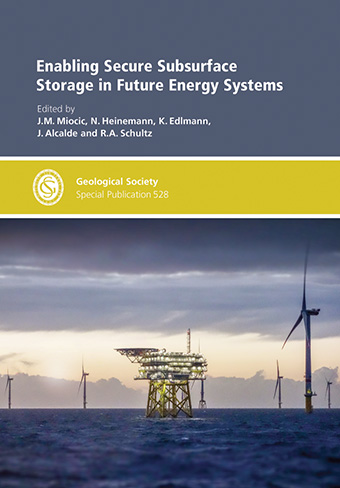
- Compressed air energy storage (CAES) by Seunghee Kim et al.;
- Carbon capture, utilization, and sequestration (CCUS) by Ola Babarinde et al.;
- Hydrogen storage by Johannes Miocic et al.; and
- Site characterization, risk analysis, and monitoring by Schultz et al.
- An overview of underground energy-related product storage and sequestration by Schultz et al.
Everyone on the team should be proud of what they have accomplished!
2021
Several activities stood out this year.
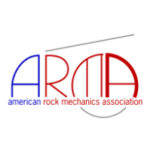 In June I was elected to serve on ARMA’s Board of Directors for a 6-year term.I’m a member of the Financial Committee, Membership Committee, and Chair the Communications Task Force.
In June I was elected to serve on ARMA’s Board of Directors for a 6-year term.I’m a member of the Financial Committee, Membership Committee, and Chair the Communications Task Force.
An edited volume for the Geological Society of London Special Publications series was started, on the topic of “Secure Subsurface Storage for Future Energy Systems,” and I am one of its editors. The papers should appear in 2023. I also co-organized a pair of virtual oral and poster sessions at the European Geosciences Union meeting in May that served as the impetus for this volume. The editors include Johannes Miocic, Niklas Heinemann, Katriona Edlmann, and Juan Alcalde.
A paper describing for formation, structure, and rationale for ARMA’s Underground Storage and Utilization Technical Committee was published in ARMA Letters, 32, Fall 2021 issue, 12–26.
I was also pleased to deliver an invited seminar on “Underground energy storage and the energy transition” to the Energy Resources and Petroleum Engineering Program, King Abdullah University of Science and Technology (KAUST), Thuwal, Saudi Arabia, 27 October 2021, Thomas Finkbeiner, sponsor. The presentation given remotely and we enjoyed a lively Q&A on the topic afterwards.
2020
 This was a very active year for my involvement with the American Rock Mechanics Association (ARMA). First, I was involved in the creation of a new Distinguished Service Award, for which I am also Chair of the award’s selection committee. The award recognizes outstanding service to the organization in each of three experience levels: student, junior, and senior. Second, I organized a new Technical Committee on Underground Storage and Utilization and was appointed as its Founding Chair. We pioneered the use of social media such as LinkedIn® https://www.linkedin.com/in/usutc-arma-508b1a1b6/ and YouTube https://www.youtube.com/channel/UCLmVda-7Eb0-AFadr4AlKNw/ to host videos and related materials for ARMA.
This was a very active year for my involvement with the American Rock Mechanics Association (ARMA). First, I was involved in the creation of a new Distinguished Service Award, for which I am also Chair of the award’s selection committee. The award recognizes outstanding service to the organization in each of three experience levels: student, junior, and senior. Second, I organized a new Technical Committee on Underground Storage and Utilization and was appointed as its Founding Chair. We pioneered the use of social media such as LinkedIn® https://www.linkedin.com/in/usutc-arma-508b1a1b6/ and YouTube https://www.youtube.com/channel/UCLmVda-7Eb0-AFadr4AlKNw/ to host videos and related materials for ARMA.
It was a privilege to visit UT Austin![]() and present a lunch and learn seminar on “Challenges to providing containment integrity for US underground natural gas storage facilities” through the ARMA Student Chapter, Jackson School of Geosciences, on March 12. Great to remake acquaintances and to establish new ones.
and present a lunch and learn seminar on “Challenges to providing containment integrity for US underground natural gas storage facilities” through the ARMA Student Chapter, Jackson School of Geosciences, on March 12. Great to remake acquaintances and to establish new ones.
2019
Wonderful visits and presentations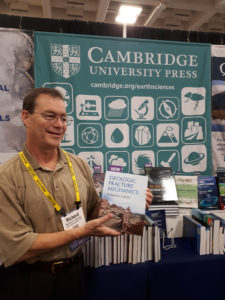 this Fall at the Houston Geological Society and, shown here, at AGU’s centennial meeting in San Francisco in December. The book was published in August/September and is proving to be quite the hit.
this Fall at the Houston Geological Society and, shown here, at AGU’s centennial meeting in San Francisco in December. The book was published in August/September and is proving to be quite the hit.
The States First initiative, a joint collaborative effort between the Interstate Oil and Gas Compact Commission and the Ground Water Protection Council, was recently renamed the State Oil & Gas Regulatory Exchange.
The proofs for my book, Geologic Fracture Mechanics,  are now finished! It is entering the final production stages at the publisher, Cambridge University Press, and is due to appear internationally this Fall! Check it out here.
are now finished! It is entering the final production stages at the publisher, Cambridge University Press, and is due to appear internationally this Fall! Check it out here.
My company website for Orion Geomechanics LLC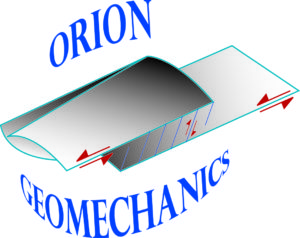 is now updated, refreshed, and published! www.oriongeomechanics.com. Come see and let’s get down to doing business.
is now updated, refreshed, and published! www.oriongeomechanics.com. Come see and let’s get down to doing business.
2018
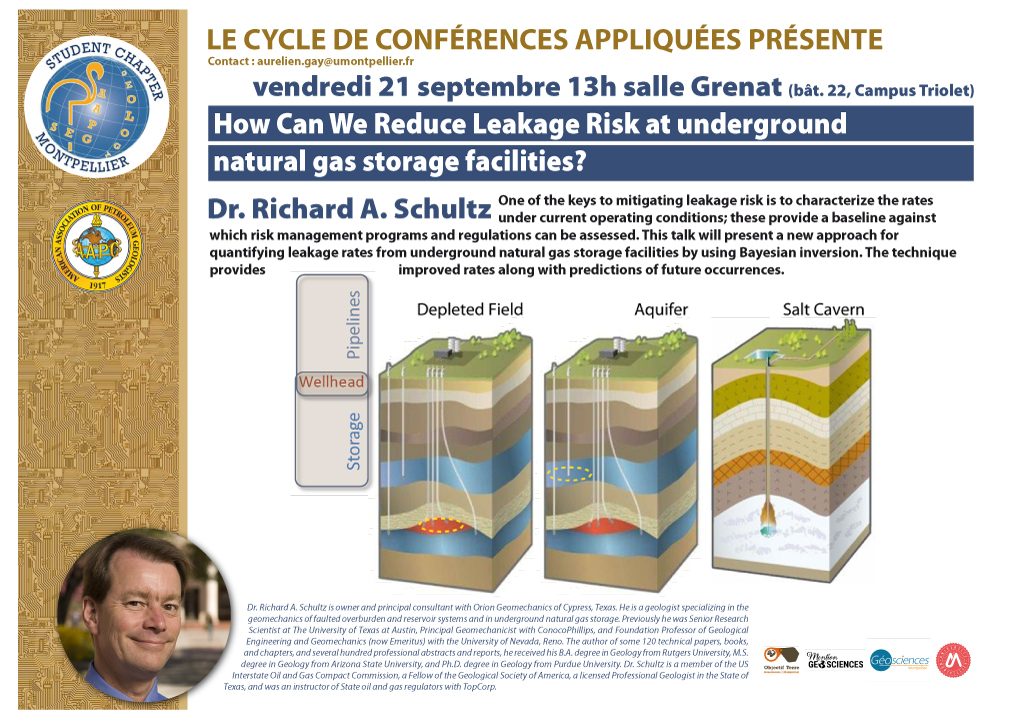 In September I spent two weeks in France, traveling to Paris and Montpellier to deliver 5 seminars to universities and industry. Great to refresh acquaintances and to make new ones, along with sharing the US perspective on Underground Natural Gas Storage. Europeans were particularly interested in learning more about the California regulations, since these may have an effect on their operations there, and also about how to calculate occurrence frequencies from facilities.
In September I spent two weeks in France, traveling to Paris and Montpellier to deliver 5 seminars to universities and industry. Great to refresh acquaintances and to make new ones, along with sharing the US perspective on Underground Natural Gas Storage. Europeans were particularly interested in learning more about the California regulations, since these may have an effect on their operations there, and also about how to calculate occurrence frequencies from facilities.
My post about this on LinkedIn garnered more than 4,262 views in less than a week, indicating substantial interest in this topic.
Last week (June) we held ARMA’s 52nd US Rock Mechanics/Geomechanics Symposium in Seattle Washington. More than 750 people attended from some 36 countries, presenting more than 400 high-quality presentations and 5 keynote lectures. The symposium was a successful and landmark event. All posters were up and available for discussion during the entire event. Plus the adjoining DFNE conference deepened and enriched the experience for all. We thank the organizers and participants in Seattle and look forward to the 53rd Symposium in New York in June 2019!

Richard receiving the Presidential Citation from ARMA President Laura Pyrak-Nolte
I was also honored with a Presidential Citation for dedicated service managing the technical program for the 52nd US Rock Mechanics/Geomechanics Symposium. This award recognizes the extraordinary efforts of our technical program team, from disciplinary track leads through session developers/chairs through abstract and paper reviewers. To everyone who worked to make the symposium a success- thank you!
In May the 2018 Annual Business Meeting for IOGCC  was held in Oklahoma City. Progress was reported in a variety of areas, including welcoming our newest state, Idaho, to the fold as an oil and gas producer. My former state, Nevada, is also represented. Reaching out to Mexico via FracFocus and other initiatives continues to be a priority given their strategic activities in natural gas transport and storage. Progress in the regulatory environment related to induced seismicity and underground storage was also noted. It was great to be there and to interact with so many friends and colleagues!
was held in Oklahoma City. Progress was reported in a variety of areas, including welcoming our newest state, Idaho, to the fold as an oil and gas producer. My former state, Nevada, is also represented. Reaching out to Mexico via FracFocus and other initiatives continues to be a priority given their strategic activities in natural gas transport and storage. Progress in the regulatory environment related to induced seismicity and underground storage was also noted. It was great to be there and to interact with so many friends and colleagues!
We hope you joined your industry colleagues at the 16th Annual Platts Gas Storage Outlook Conference, Houston, Texas, January 8–9, 2018 at the Royal Sonesta hotel. I was a panelist on “Rulemakings and Regulations” with a presentation on how we can better characterize natural gas occurrence frequencies by using Bayesian methods. Interesting and informative discussions from several participants on gas storage M&A and potential developments in Mexico!
16th Annual Platts Gas Storage Outlook Conference, Houston, Texas, January 8–9, 2018 at the Royal Sonesta hotel. I was a panelist on “Rulemakings and Regulations” with a presentation on how we can better characterize natural gas occurrence frequencies by using Bayesian methods. Interesting and informative discussions from several participants on gas storage M&A and potential developments in Mexico!
2017

Sam Savage (left) and Doug Hubbard at the Houston workshop in November 2017
Chevron hosted Doug Hubbard and Sam Savage for a two-day workshop in Houston this past week. The 32 participants included many from Chevron along with others from oil-and-gas companies, insurance companies, the legal profession, and others.
Day 1 focused on Embracing Uncertainty, led by Sam; Day 2 expanded upon How to Measure Anything with a foray into Project Management, led by Doug. The capabilities and potential of SIPmath and other tools from Probability Management were displayed, discussed, and explored through example problems as well as new ones suggested by the audience and executed on the spot. A real Tour de Force that demonstrated how we can access and use these approaches to nail down uncertainties, reduce risk, and improve decisions. More detail available at http://probabilitymanagement.org/what-we-do.html.
The report of the States First Gas Storage Workgroup was released today, May 10, 2017, during the Interstate Oil and Gas Compact Commission meeting in Oklahoma City. The report represents the culmination of more than a year’s effort to update and document the technical basis for defining regulations for underground natural gas storage facilities in the United States.
 Just back from a wonderful technical class and sessions at the Spring 2017 Solution Mining Research Institute (SMRI) conference in Albuquerque. Lots of interest in how best to promote well integrity for underground storage of natural gas, NGLs, and petroleum (at the US Strategic Petroleum Reserve).
Just back from a wonderful technical class and sessions at the Spring 2017 Solution Mining Research Institute (SMRI) conference in Albuquerque. Lots of interest in how best to promote well integrity for underground storage of natural gas, NGLs, and petroleum (at the US Strategic Petroleum Reserve).
 Major regulatory changes are underway for the US underground natural gas storage industry, following the Aliso Canyon blowout in winter 2015–2016. Operators are coming to grips with how to demonstrate compliance with the new regulations in California and at the Federal level via PHMSA. Our recent article in Oil and Gas Journal (we made the cover highlights!) gave an overview of the major issues.
Major regulatory changes are underway for the US underground natural gas storage industry, following the Aliso Canyon blowout in winter 2015–2016. Operators are coming to grips with how to demonstrate compliance with the new regulations in California and at the Federal level via PHMSA. Our recent article in Oil and Gas Journal (we made the cover highlights!) gave an overview of the major issues.
In January I was a Panelist discussing “Growing Regulatory Oversight  Concerning Gas Storage Well Operations” at the 15th Annual Platts Gas Storage Outlook Conference, Houston, Texas, January 12–13, 2017. I also presented a talk on “Capturing Risk and Integrating Workflows in the post-Aliso Canyon Era,” with Charles Chabannes of Geostock Sandia LLC, Houston, at the conference.
Concerning Gas Storage Well Operations” at the 15th Annual Platts Gas Storage Outlook Conference, Houston, Texas, January 12–13, 2017. I also presented a talk on “Capturing Risk and Integrating Workflows in the post-Aliso Canyon Era,” with Charles Chabannes of Geostock Sandia LLC, Houston, at the conference.
It was an outstanding meeting that put on the table many of the issues, and several classes of solutions, facing the underground storage industry today.
2016
An excellent meeting of IOGCC in Little Rock. Arkansas 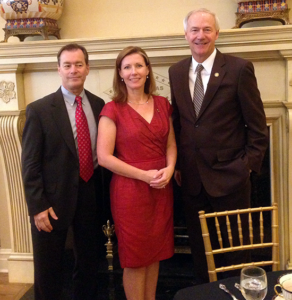 last week, including an inspiring address delivered by the incoming 2017 IOGCC Chairman and Arkansas Governor Asa Hutchinson (pictured, right; also shown are the Consul General of Canada (center), and me at the Governor’s mansion in Little Rock).
last week, including an inspiring address delivered by the incoming 2017 IOGCC Chairman and Arkansas Governor Asa Hutchinson (pictured, right; also shown are the Consul General of Canada (center), and me at the Governor’s mansion in Little Rock).
In June I was appointed by David Porter, Chairman of the Texas Railroad Commission and Official Representative for the State of Texas, to the Interstate Oil & Gas Compact Commission (IOGCC).  Standing committee appointments include the Energy Resources, Research and Technology Committee and the Environment & Safety Committee. Thanks to all who kindly were involved in this prestigious appointment.
Standing committee appointments include the Energy Resources, Research and Technology Committee and the Environment & Safety Committee. Thanks to all who kindly were involved in this prestigious appointment.
Thanks go out to Haakon Fossen and his nomination team, ![]() and to GSA, for this wonderful recognition as a newly elected Fellow of the Geological Society of America. Congratulations to the other newly elected Fellows and award recipients for 2016.
and to GSA, for this wonderful recognition as a newly elected Fellow of the Geological Society of America. Congratulations to the other newly elected Fellows and award recipients for 2016.

In May I was honored as the recipient of the 2016 Completions Optimization and Technology Region Award from SPE’s Gulf Coast North America Region. My congratulations go to all the other winners in the Gulf Coast Section and to my colleagues and nominators in Petroleum and Geosystems Engineering at UT.
I was appointed in April as a Member of the Natural Gas and Liquids Storage Work Group,  sponsored by the Interstate Oil & Gas Compact Commission (IOGCC) and States First. The group was tasked with reformulating guidelines for regulations for safe storage of natural gas in underground chambers as part of the US national energy infrastructure. Our first meeting occurred in early May in Denver.
sponsored by the Interstate Oil & Gas Compact Commission (IOGCC) and States First. The group was tasked with reformulating guidelines for regulations for safe storage of natural gas in underground chambers as part of the US national energy infrastructure. Our first meeting occurred in early May in Denver.
Exciting work was exhibited at the SPE/SEG Workshop on Induced Seismicity held in Fort Worth, Texas, in March 2016. The 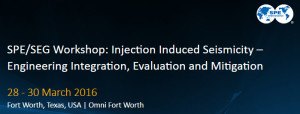 workshop was a mix of thematic, technical, case study, and legal/regulatory framework presentations. About 70 attendees were from industry (operators, service companies, water disposal companies, and consultants), 20 from government and regulatory bodies, 15 from academia, and 5 other (legal, financial).
workshop was a mix of thematic, technical, case study, and legal/regulatory framework presentations. About 70 attendees were from industry (operators, service companies, water disposal companies, and consultants), 20 from government and regulatory bodies, 15 from academia, and 5 other (legal, financial).
Some of the risk factors that were emphasized included:
- Faults
- Stress state (leading to critically stressed faults)
- Injection (of saline wastewater) into (or accessible to) crystalline basement
- High injection rates
- Injection volumes that could lead to areal distribution of induced seismicity
- Distance between injector and fault, leading to time delay between shut-in and cessation of induced slip on faults
Here are some key take-aways from the Workshop (there are many more that center on more technical issues):
- Injection volumes in states from Oklahoma to Ohio have been reduced since at least mid-2015, due to the industry downturn (hence less saltwater injection and hydraulic fracturing), and stiffer regulations requiring this, in some combination. The result consistently is reduced numbers of seismic events in these areas, strongly suggesting that this mitigation strategy (reduced cumulative injection volumes) can be effective in reducing induced seismicity associated with wastewater injection. This can be tied into injection rate (Weingarten et al., 2015 Science) by incorporating and considering time scale of injection volumes (monthly, yearly).
- A key issue is the definition of Success in an IS mitigation program. The consensus factors include: (a) no felt events (so by implication smaller events at depth may inform completions and the science but do not define a nuisance to the public; and (b) establishing and maintaining good and positive working relations among all stakeholders, including regulators, operators, politicians, and the public. Some states score better here than others but a set like this can define the standard for what can and maybe should be aimed for in any mitigation program.
- Another consensus outcome is obvious but requires restating: large IS events (defined as felt earthquakes and characterized on a Modified Mercalli felt-intensity scale) require a sufficiently large fault, in a suitable stress state, that can be acted upon by pore pressure changes due to injection. Fundamentally, this means that identifying faults (and of course their attitude in 3D space) should be of first-order importance and priority. Second is adequate definition of stress state. Both are of course necessary but not sufficient for IS since we then need pore pressure change suitable to move the faults in their stress state to failure. Only a combination of all three can give us initial geologic bounds on the IS problem.
2015
In 2015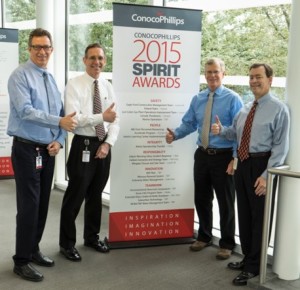 I received the SPIRIT Award for Innovation from ConocoPhillips, with Indonesia Water Management Team, for significant contributions to subsurface hydrocarbon containment integrity. Here we see some of my teammates from Houston who, along with our colleagues in Jakarta, shared in this prestigious award.
I received the SPIRIT Award for Innovation from ConocoPhillips, with Indonesia Water Management Team, for significant contributions to subsurface hydrocarbon containment integrity. Here we see some of my teammates from Houston who, along with our colleagues in Jakarta, shared in this prestigious award.
This is the highest award in ConocoPhillips for teams that added value through sustained, large-scale integrated effort.
